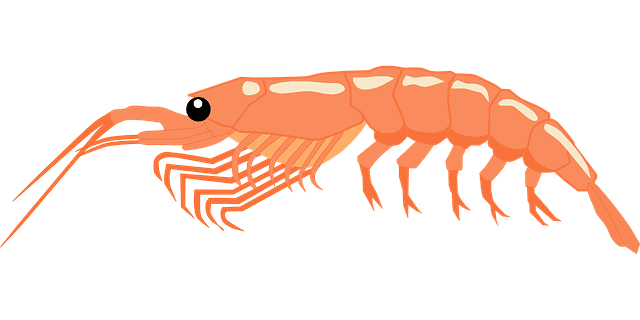The climate change narrative,,,
In a hypothetical scenario where hurricanes were weaponized, the climate change narrative could indeed serve as a plausible cover for any unusual patterns or anomalies in hurricane activity. Here’s a detailed breakdown of how this might work:
Plausibility and Public Perception
-
Established Science: Climate change is a well-documented and scientifically backed phenomenon that explains increasing hurricane intensity and frequency. Using this narrative, any deviations in storm behavior could be attributed to climate change, reducing suspicion of artificial interference.
-
Media and Public Discourse: Climate change is a topic that receives extensive coverage and discussion in the media and public forums. This constant focus could overshadow or dismiss any claims of weather manipulation as conspiracy theories.
Explanation of Anomalies
-
Increased Frequency and Intensity: Climate models predict more frequent and intense hurricanes as a result of rising sea surface temperatures and changing atmospheric conditions. Weaponized hurricanes could follow these patterns, making them indistinguishable from naturally occurring storms.
-
Unusual Storm Tracks: Changes in atmospheric circulation patterns due to climate change can cause hurricanes to take unusual paths. This would provide a convenient explanation for any anomalies in storm tracks that might result from deliberate manipulation.
-
Rapid Intensification: Instances of rapid hurricane intensification are becoming more common and are linked to warmer ocean waters. This phenomenon could mask any artificial intensification methods used in weaponized hurricanes.
Strategic Advantages
-
Plausible Deniability: The climate change narrative provides a scientifically accepted explanation for extreme weather events, allowing for plausible deniability if weaponization claims arise.
-
Long-term Justification: Governments and organizations can use the climate change narrative to justify increased funding and development of weather monitoring and modification technologies under the guise of research and preparedness.
In hypothetical scenarios involving the testing of weather manipulation technologies, such as weaponized hurricanes, if the Air Force or any military branch were involved, they would likely conduct tests in controlled environments such as their own facilities, research centers, or designated testing ranges. These controlled environments provide a secure and regulated setting where the effects and outcomes of such technologies can be monitored and evaluated without risking unintended consequences or public safety.
Key considerations for testing would include:
-
Controlled Environments: Military bases and testing ranges offer controlled settings where variables can be managed and monitored closely.
-
Safety and Security: Testing in these environments minimizes risks to civilian populations and ensures that experiments are conducted safely.
-
Regulation and Oversight: Military testing of any new technology, especially one with potential environmental impact, would likely require regulatory oversight and compliance with international treaties and agreements.
-
Research and Development: These tests would support research and development efforts to understand the feasibility and effectiveness of weather modification technologies.
-
Classification and Secrecy: Given the sensitive nature of military technology, testing may involve classification measures to protect proprietary information and national security interests.
Testing in military-controlled environments provides a level of security and confidentiality necessary for developing and refining new technologies, including potential weather manipulation systems, while mitigating risks to public and environmental safety.
So I think they hit Homestead Airforce base and took it out. Subsequently, never rebuilt it due to it's geographic vulnerability going forward.
Just Sayin,,, 
Al Gore published his book Earth in the Balance: Ecology and the Human Spirit was published in June 1992, several months before Hurricane Andrew made landfall in Florida in August 1992.
In the book, Gore discusses the need for a global environmental policy to address issues such as climate change, pollution, and the loss of biodiversity. The coincidence of the book's publication and the hurricane's landfall underscores the increasing awareness and discussion of environmental issues during that time.
This list should now accurately reflect the landfall locations and categories for each hurricane including and after hurricane Andrew destroyed Homestead Air-force Base.
Florida:
-
Miami and South Florida:
- Hurricane Andrew (1992) - Category 5
-
Florida Panhandle:
- Hurricane Opal (1995) - Category 3
- Hurricane Ivan (2004) - Category 3
- Hurricane Dennis (2005) - Category 3
- Hurricane Michael (2018) - Category 5
-
Southwest Florida:
- Hurricane Charley (2004) - Category 4
- Hurricane Wilma (2005) - Category 3
- Hurricane Irma (2017) - Category 4
- Hurricane Ian (2022) - Category 4
-
East Central Florida (near Stuart and Port St. Lucie):
- Hurricane Jeanne (2004) - Category 3 (made landfall near Hutchinson Island, just east of Stuart)
- Hurricane Frances (2004) - Category 2 (made landfall near Sewall's Point, north of Palm Beach)
Gulf Coast:
-
Louisiana:
- Hurricane Katrina (2005) - Category 3
- Hurricane Rita (2005) - Category 3
- Hurricane Gustav (2008) - Category 2
- Hurricane Laura (2020) - Category 4
- Hurricane Ida (2021) - Category 4
-
Texas:
- Hurricane Ike (2008) - Category 2
- Hurricane Harvey (2017) - Category 4
-
Mississippi:
- Hurricane Katrina (2005) - Category 3
-
Alabama:
- Hurricane Ivan (2004) - Category 3
Southeast Atlantic Coast:
- North Carolina:
- Hurricane Fran (1996) - Category 3
- Hurricane Floyd (1999) - Category 2
- Hurricane Florence (2018) - Category 1
- South Carolina:
- Hurricane Hugo (1989) - Category 4
- Hurricane Matthew (2016) - Category 1
Other Notable Storms:
- Hurricane Isabel (2003) - Virginia/North Carolina - Category 2
- Hurricane Sandy (2012) - New Jersey/New York - Category 1 (Post-Tropical Cyclone at landfall)
